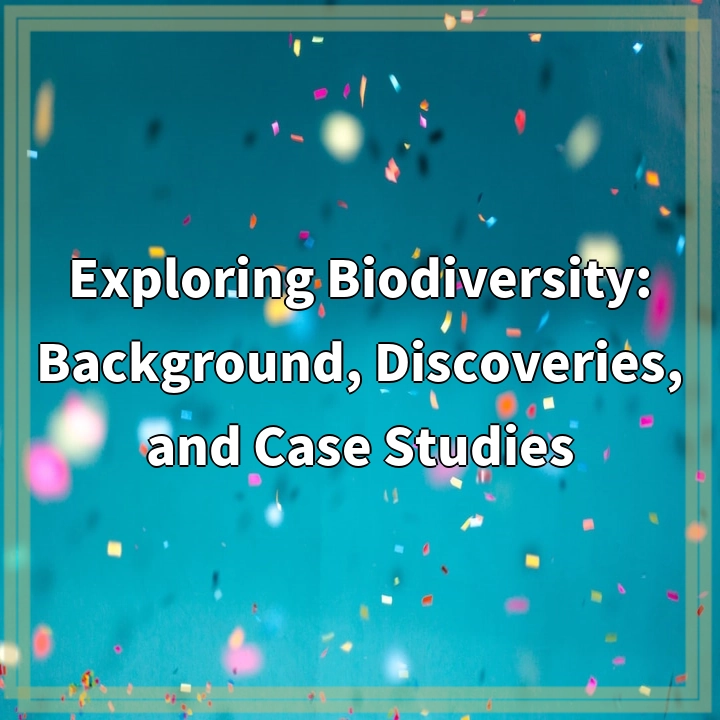Physical Address
304 North Cardinal St.
Dorchester Center, MA 02124
Physical Address
304 North Cardinal St.
Dorchester Center, MA 02124

Biodiversity refers to the variety of life on Earth, encompassing all living organisms, from microorganisms to plants, animals, and ecosystems. It represents the intricate web of interactions between different species and their habitats.
Biodiversity loss has become a pressing global issue with severe consequences for both the environment and human well-being. Here are some of the key real-world problems associated with the decline of biodiversity:
Habitat destruction, primarily caused by human activities such as deforestation, urbanization, and land conversion for agriculture, is a major threat to biodiversity. As natural habitats disappear, species lose their homes, leading to population decline and, in some cases, extinction.
Invasive species, introduced from other parts of the world, can have devastating impacts on native ecosystems and species. These species often outcompete native species for resources, disrupt natural interactions, and alter the balance of ecosystems.
Climate change poses significant challenges to biodiversity. Rising temperatures, altered precipitation patterns, and changing habitats can lead to the shifting distribution and decline of species. Ecosystems may struggle to adapt, leading to ecosystem collapses and loss of vital services they provide.
Unsustainable exploitation of natural resources, including overfishing, illegal wildlife trade, and excessive hunting, puts immense pressure on biodiversity. When species are overharvested, their populations cannot replenish, leading to a decline in numbers and potential extinction.
Pollution, whether air, water, or soil pollution, affects biodiversity at various levels. Toxic chemicals can accumulate in ecosystems, harming species and disrupting their reproductive abilities. Pollution also impacts food chains and can have cascading effects on entire ecosystems.
Biodiversity loss leads to a decline in ecosystem services, such as pollination, nutrient cycling, water purification, and climate regulation. These services are vital for human well-being, and their deterioration can have severe socio-economic impacts.
The destruction of natural habitats and the loss of biodiversity increase the risk of zoonotic diseases, those that can be transmitted between animals and humans. As humans come into closer contact with wildlife, the chances of diseases spillover and outbreaks, such as COVID-19, become more likely.
Addressing the challenges of biodiversity loss is crucial to safeguard the health of our planet and future generations. Here are some potential solutions to combat biodiversity loss:
Preserving and protecting natural habitats is essential for the survival of diverse species. Establishing protected areas, implementing land-use planning strategies, and promoting habitat restoration can help conserve and expand habitats to support biodiversity.
Implementing sustainable practices in agriculture, forestry, fisheries, and other land-use sectors is critical. Practices such as organic farming, responsible logging, and sustainable fishing can minimize the negative impacts on biodiversity and ecosystems.
Efforts to control and manage invasive species are essential to protect native ecosystems. Strict monitoring, early detection, and swift response to invasive species can help prevent their establishment and minimize their impact on biodiversity.
Tackling climate change is vital to protect biodiversity. Reducing greenhouse gas emissions, promoting renewable energy, and enhancing the resilience of natural systems through climate adaptation strategies are important steps in safeguarding species and habitats.
Encouraging sustainable practices and responsible consumer choices can reduce the demand for products that contribute to biodiversity loss. Supporting sustainable agriculture, buying sustainably sourced goods, and reducing waste can make a positive impact on biodiversity.
Raising awareness about the importance of biodiversity and the impacts of its loss is crucial. Education programs, public campaigns, and community engagement initiatives can help people understand the value of biodiversity and foster a sense of responsibility towards its conservation.
Addressing biodiversity loss requires collaboration among governments, organizations, communities, and individuals. Supporting and implementing policies, regulations, and international agreements that prioritize biodiversity conservation can play a significant role in protecting species and ecosystems.
By adopting these solutions and working collectively, we can contribute to the preservation and restoration of biodiversity, ensuring a sustainable and thriving planet for future generations.
If you’re wondering where the article came from!
#